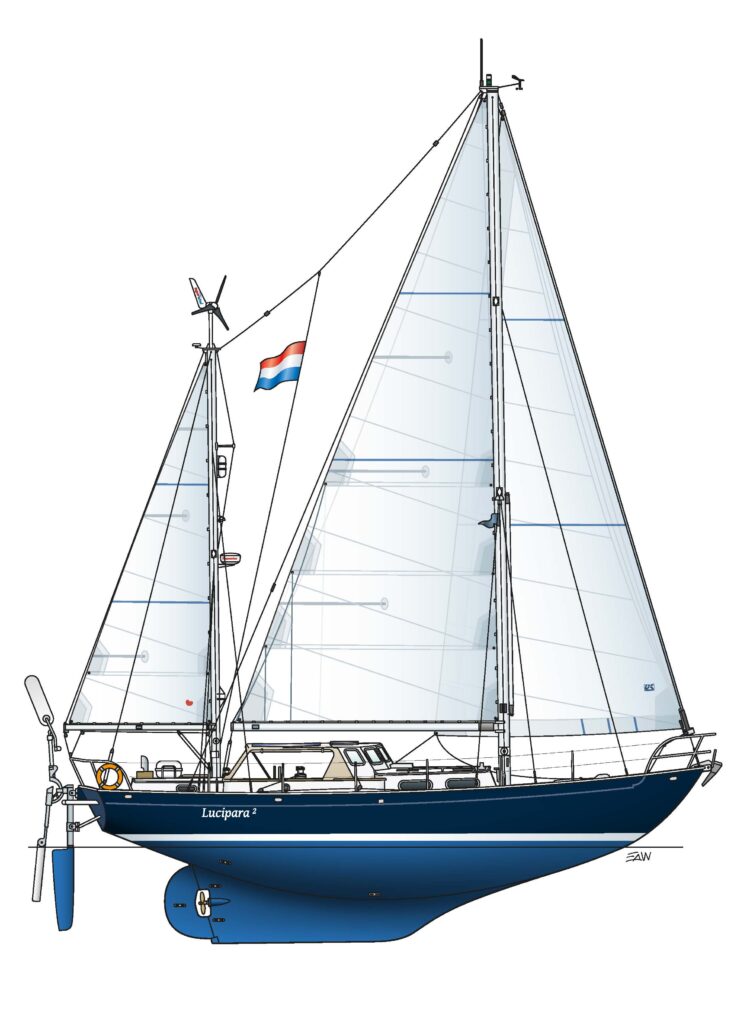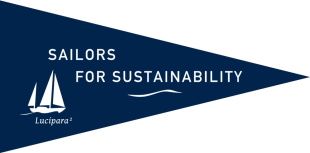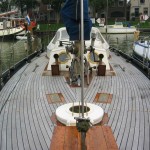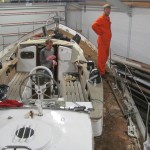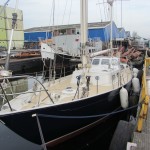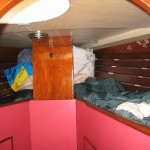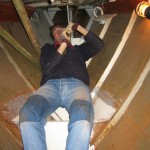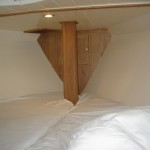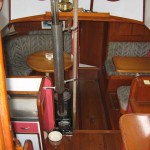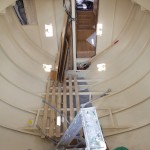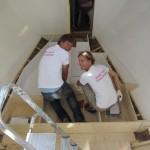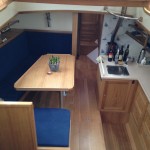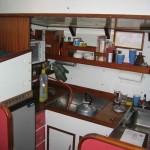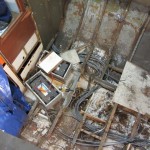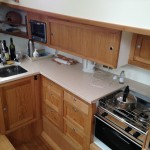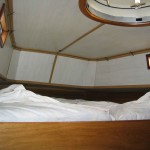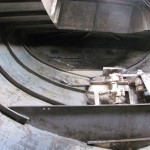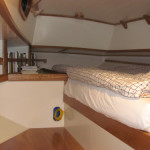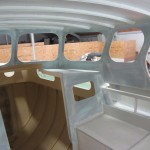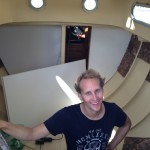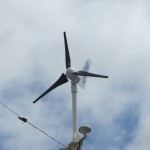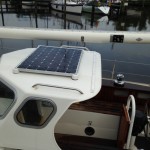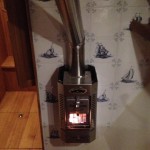When Ivar bought Lucipara² in 2004, he thought he’d renovate his new found love in five years. It proved to be wishful thinking: timing and budgeting-wise the whole project could be compared to the NoordZuidlijn in Amsterdam… In the end, only the hull and masts were left unaltered. We added comfort, space, light.
During the renovations, we paid special attention to energy efficiency and renewable energy. The whole interior has improved insulation (Rockwool 6 cm), and a modern diesel engine and central heating system were installed. We aim to minimize the use of diesel and are looking into the use of biofuels. A wood stove further reduces the diesel we need for heating. Most of our electricity is generated by the wind generator (350W) and solar panels (150W). They also power our watermaker.
Here are some impressions (before, during and after pictures).
